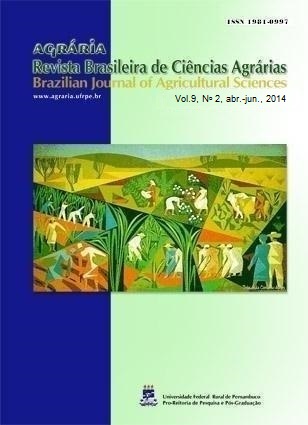Utilization of electrical energy deriving from wind, hydroelectric and thermo-electric in the Jaguaribe-Apodi irrigated district, Brazil
DOI:
https://doi.org/10.5039/agraria.v9i2a3589Keywords:
irrigated agriculture, power electric, economic viabilityAbstract
The modern agriculture with the insertion of technology of low-cost irrigation promotes economic and social development of family farmers belonging to the category of farmers of irrigation district of Jaguaribe-Apodi promoting increase in the production of diverse crops in the irrigated areas. However, spending large amounts of electrical energy, reaching 35% of the total cost of irrigation, significantly reduces the profit margin for the producer. The use of energy from wind can reduce the energy costs of irrigation. The present study aimed to carry out a comparative analysis of the economic feasibility between the utilization of electrical energy deriving from hydroelectric, thermo-electric and wind generation, in the Jaguaribe-Apodi district. The methodology utilized was based on the profitability indicators as the internal rate of return and the term of return on initial investment, for information about which energy source is most economical for small producers. It is concluded that wind energy had higher economic viability in the generation of electrical energy, reducing the costs of irrigation of rural producer.
Downloads
Downloads
Published
How to Cite
Issue
Section
License

This work is licensed under a Creative Commons Attribution-NonCommercial 3.0 Unported License.


